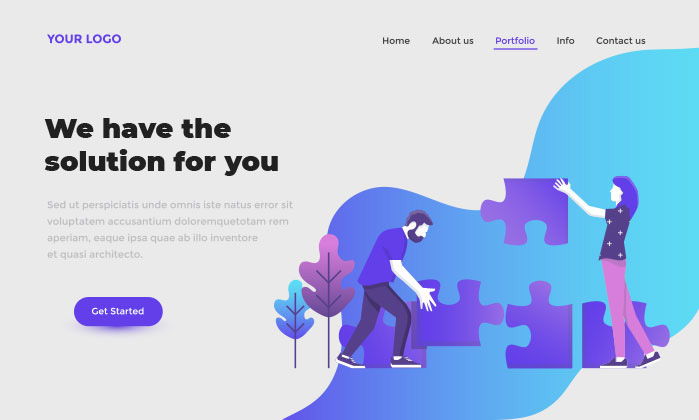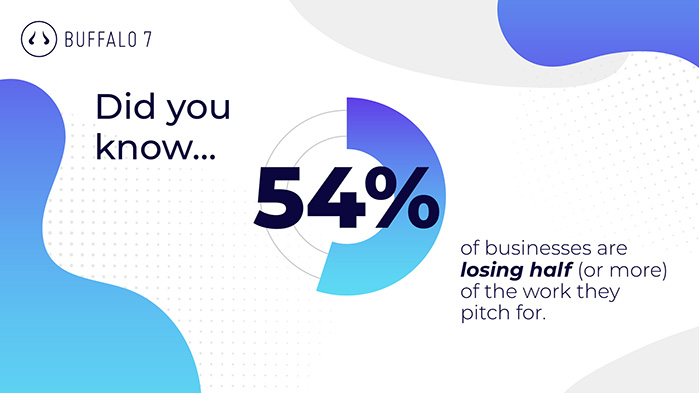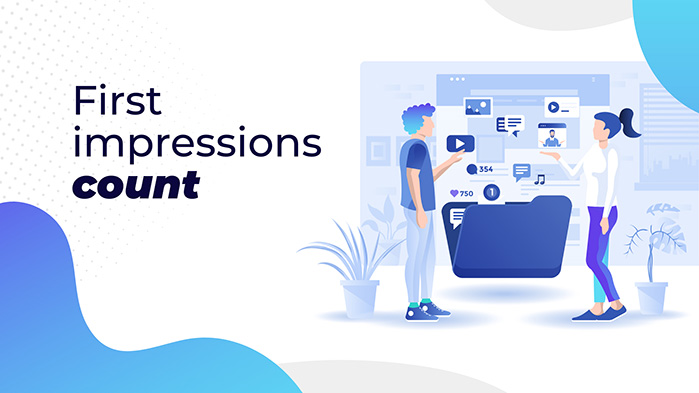You’re missing a vital part of your marketing arsenal.
It trips businesses up time and time again, and yet very few take action to remedy it.
And it means you’re failing at the final, most important, part of the sales cycle.
If you’re shouting at your screen now, incensed at my presumptuous cheek, because you’re one of the very few that spend resource on this, then brilliant. Well done you.
But for everyone else, keep reading – I’ll explain what you’re missing and why it’s so vital.
Valuable marketing content at every stage of the journey
Let’s think about your sales funnel. More or less, it’s the same as everyone else’s: getting your customers from awareness to purchase. And providing valuable content along the way to make sure that your prospects stay engaged and value your proposition.
We all know that drip-feeding content like this can be expensive.
You’ve got yourself a swanky new website, courtesy of a trendy design agency. And maybe you’re giving away an ebook or some other great content here.
You’ve got pricey CRM systems, landing pages and lead forms.

And you’re paying for SEO, PPC, CRO and social media experts to optimise the hell out of everything you can think of.
You’ve splashed out on a massive stand for when you’re exhibiting at trade shows, along with luxury business cards and promotional merch. OK, so exhibitions might not be part of your marketing plans in 2020 for obvious reasons, but they’ll be back.
Maybe you’re even giving away more free content when people leave their email address on your website.
All of this means that you’re probably splashing out on designers, copywriters, web designers, freelancers and/or agencies.
But in most cases, that’s money well spent. You’re spending a lot in order to get people’s attention, show them that you’re someone to consider, and get the opportunity to pitch your products or services. Brilliant. So far so good.
It’s time to make it all pay off
So what’s next? Ideally, all this hard work and expense pays off, and you get in front of them (whether that’s virtually or in-person): the all-important pitch meeting.
Months of lead nurturing. Hundreds, if not thousands, spent on content to get you to this point. And it all comes down to this.
And then you throw it all away with the awful presentation you knocked up the night before, based on a few slides you’ve harvested from a load of different decks, all in different colours, all in different fonts, and all looking like they originated in the wrong end of the 1990s.
Doesn’t it seem like madness that you’d spend all that money to get to the big pitch meeting, but then turn up without a presentation that delivers the same premium impact as the rest of your content?
Isn’t it crazy that hardly any businesses have a process, let alone a budget, for this crucial, do-or-die stage of the sales journey?
You’re losing more pitches than you win
Perhaps it’s no surprise that 54% of businesses are losing half (or more) of the work they pitch for.
The fact is that most companies aren’t set up to deliver decent presentations: 61% don’t employ anyone who specialise in slide design, and less than 25% have had any presentation training in the last year.

And the commercial impact of this? Separate research from advertising bodies the IPA and ISBA, through their pitching best practice collaboration the Good Pitch, found that the cost of pitching can be significantly more than perceived. So many companies are potentially losing far more money than they realise as a result of being ill-prepared for pitching.
So you’re spending money right up to the pitch, but then losing out on work because your actual pitch presentation is poor.
What’s the answer? Training all of your sales team up on PowerPoint?
Well, no.
Why would you try and make your own presentations? You pay experts to make your website, right? You wouldn’t attempt to produce your own corporate video, would you?
No. Of course not. You pay experts to do what they’re best at to get the best result.
Talk to an expert
So what am I saying? If you haven’t got the skills to create an amazing presentation deck in house, talk to a presentation design agency who can create something amazing for you.
It all comes down to this: your final hurdle. The meeting you’ve been spending hard cash and throwing resource after resource to get into. You won’t get another chance like this.
You’ll know your company and your product inside out, but think about how you’ll deliver that message.
Each of your key messages, clearly articulated in a logical, emotive story.
Your brand colours, brand assets, logos and style, consistently and beautifully designed, showing your products and services in super-high definition.
Dynamic animation and video to add premium gloss and support.
A fusion of form and function, tailored to speak directly to your audience, highlighting their pain points, offering innovative solutions, and presenting them with a new way of doing business.
If you can deliver that, you’re more likely to get a sale than running through the About Us page of your own website and handing out a few dog-eared brochures, right? Of course you are.
First impressions count
I often think of it like going to a really important job. Your dream role has come up. It pays great, it’s close to home, and they pay for the booze on a Friday night. What’s not to love?
So, of course, you do everything you can to secure the interview. You tidy up your CV so that it’s bang up to date and all the relevant skills are shining through.

You write a wonderful covering letter: confident, articulate, respectful and just a tiny bit playful.
Perhaps you send over a beautiful portfolio, tailored to the exact job requirements.
You’ve been charming on the phone to them, answered every query they had and – yes! – you’ve got a face-to-face interview with the CEO.
And then you get to the interview wearing your Spider-Man onesie, with egg in your beard and no shoes.
Let’s face it – even if you smash all the interview questions, your appearance has already done irreparable damage. Whatever idea they had about you as a prospect has vanished into thin air.
Sure, you might get the job, but it would be despite the way you have presented yourself, not because of it.
Face the facts
Perhaps at this point, you’re thinking, do people even need to meet in person these days? Surely email has put an end to all that?
The answer is that face-to-face meetings (IRL or virtually) are still by far the best way to win business.
The latest study published in the Journal of Experimental Social Psychology, and summarised in the Harvard Business Review lays the facts bare: visual communication is 34 times more effective than email when it comes to influencing someone.
Why is this? Fundamentally, people still buy from people. For a range of reasons.
Let’s take a look at body language. A study at UCLA stated that over 90% of communication effectiveness is determined by non-verbal cues… essentially it’s not so much what you’re saying, but the way you’re conducting yourself when you do so.
If you’re excited and passionate about your subject matter, your body will express this, whether you know it or not. And your audience will pick up on it. You can’t do this over email.
If the deck you’re presenting from fills you with pride and confidence, it will show. Likewise, if your PowerPoint presentation looks cheap and nasty, then you’ll feel it too.
And then there’s manners. If you make the effort to go and visit someone at their place of work (or set up a professional Zoom meeting), dress smartly and treat them with respect, you’re halfway to winning them over. Anyone can fire off an email, but are you prepared to pitch to someone at the drop of a hat ? You should be.
A Forbes survey showed that 84% of business executives preferred communication when you can see the other attendees. Of those, 85% said their reason was that it builds stronger, more meaningful business relationships, and that these meetings are best for persuasion (91%), leadership (87%), and engagement (86%).
So get there early, wear your best shirt and wow them with a premium presentation. First impressions count, and you’ve got to make this chance worth all the effort you’ve already put in.
Adapt to survive
The best presentations are conversations. Conversations mean engagement, and when you’re talking person to person, you’re encouraging them to release hormones that build bonding and trust. Barriers are lowered, relationships are formed, and we start acting less like faceless companies and more like people with shared goals and passions.
Flexible, interactive presentations empower you to tailor your pitch in real time. The conversation moves one way, and you can jump to the slides that support you there and then. A new subject comes up, and you can effortlessly jump to that section without starting the presentation again or hammering through a load of slides until you get to the important part.
Load your presentation up with all the slides you’ll ever need, then simply navigate to the ones you need. Adaptable, versatile and ready for any direction that the conversation might take. Meaning that you can lead the pitch, or mix things up a bit and ask your audience what they want to talk about.
One PowerPoint deck, a million possibilities.
Presentations are the missing element
So what’s the essential part of the marketing mix that you’re ignoring? It’s the collateral you need to smash your pitch meeting.
Specifically, you’re not attaching enough time, effort, budget or thought to probably the most important part of the entire process: pitching to the key decision makers that ultimately decide if they buy from you or not.
Without a professionally written, designed and built presentation, you’re going into a pitch meeting woefully underprepared. Like taking a knife to a gunfight.
So tool up and make sure your arsenal is fully stocked with the heavy calibre firepower you need to secure your sales.


